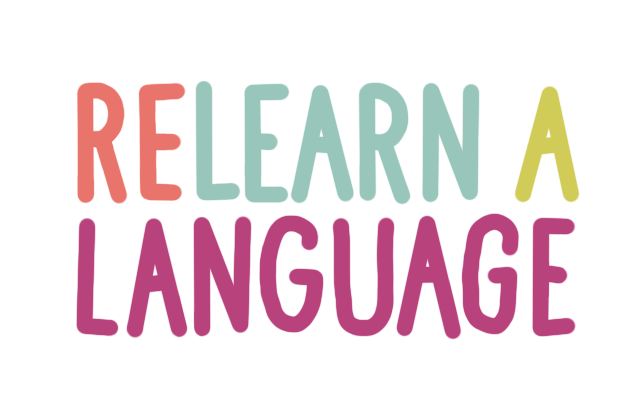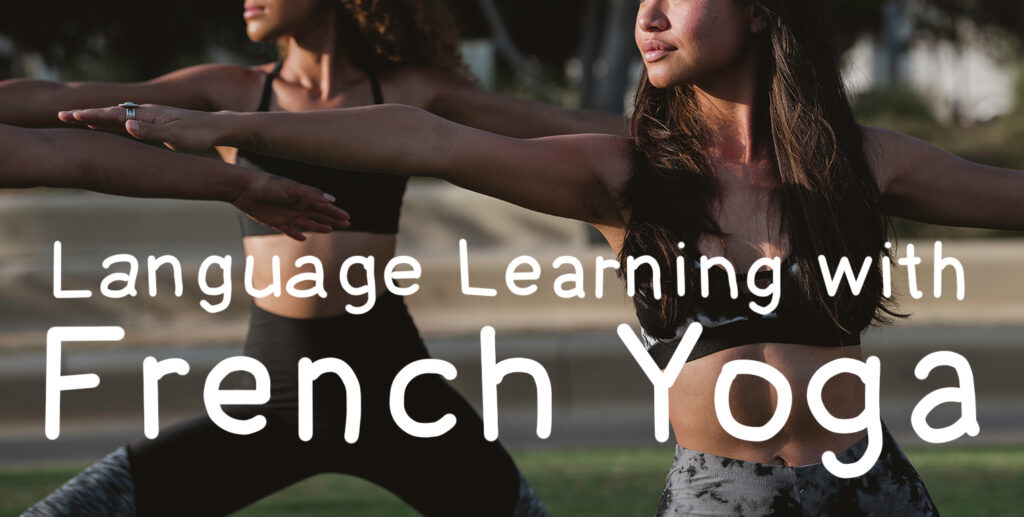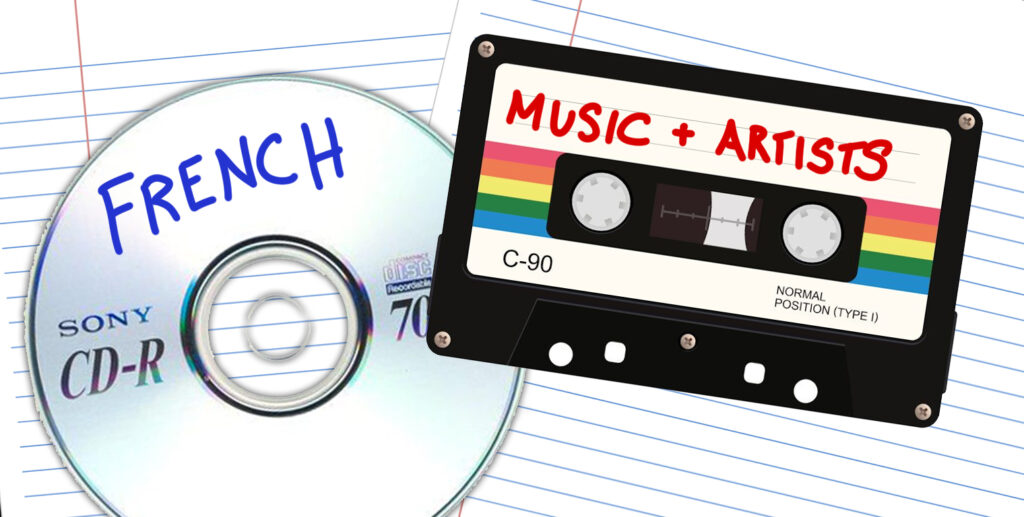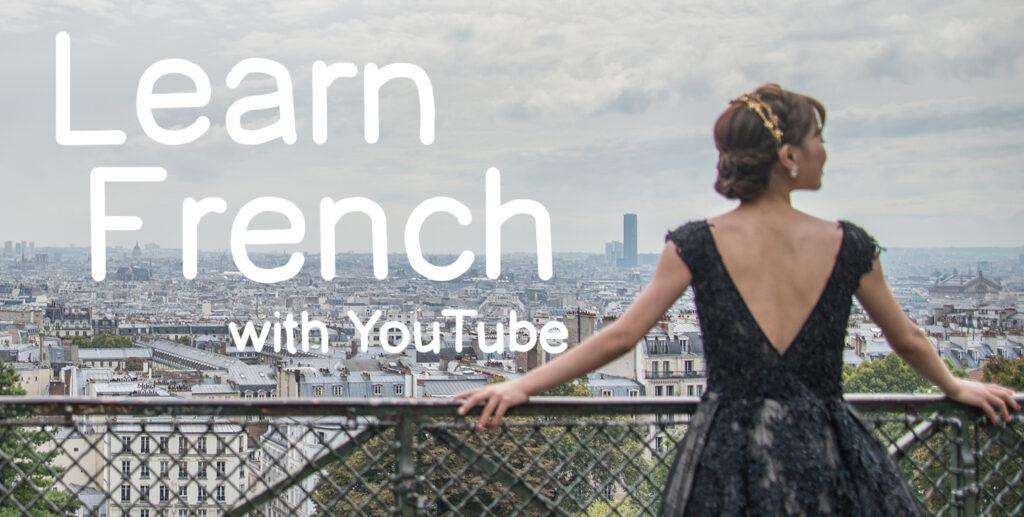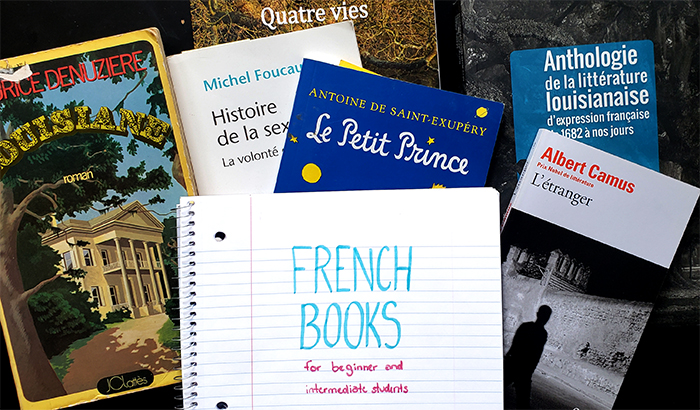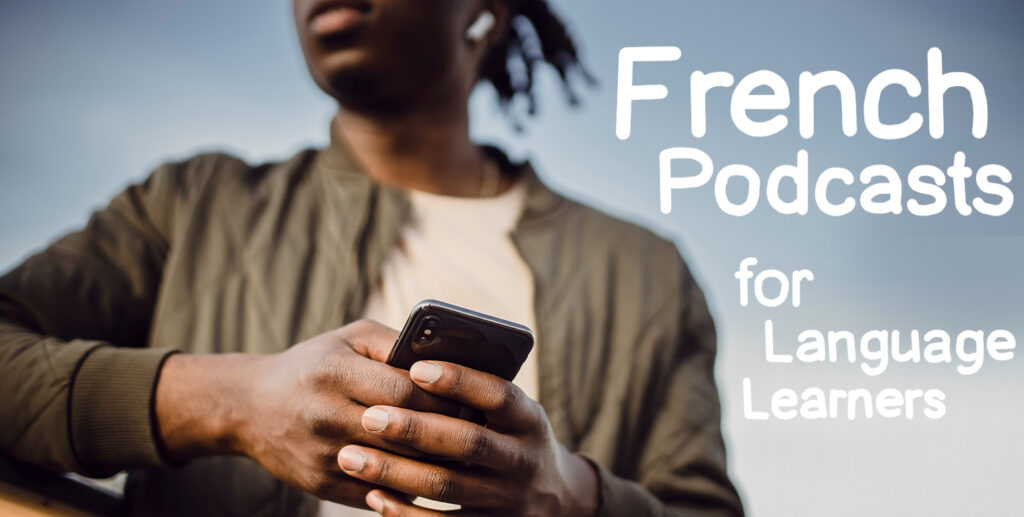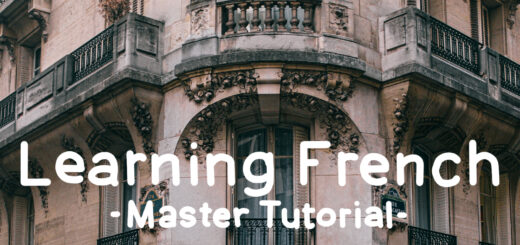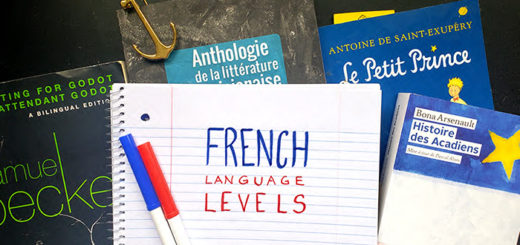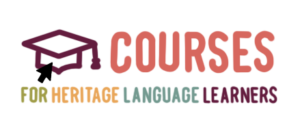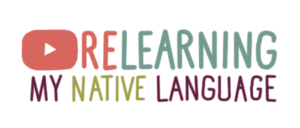French Immersion (Schools Abroad & At-Home Resources)
by Marissa Blaszko · July 4, 2021
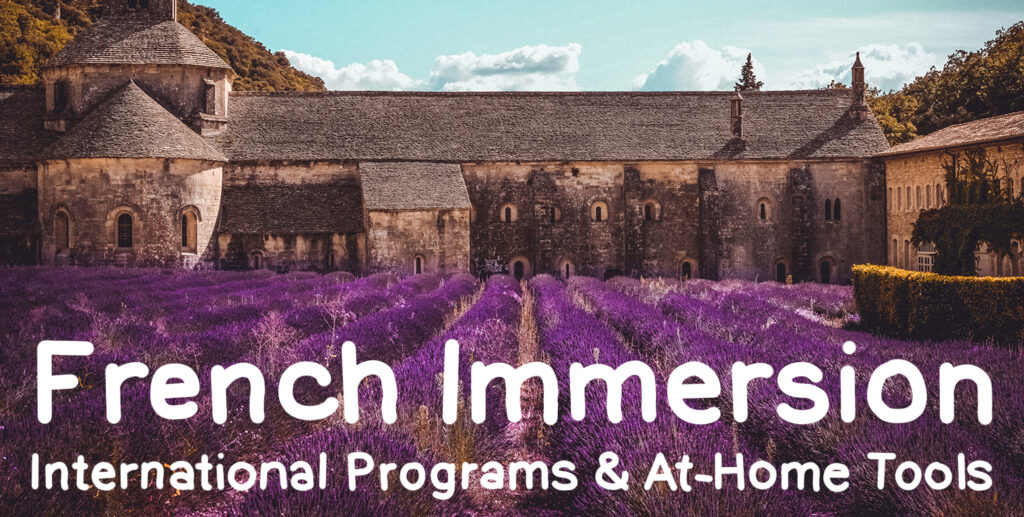
French immersion schools and programs are an incredible away to learn, relearn, or improve the language.
I personally learned French first by doing immersion abroad and then polished my skills by living French immersion in my daily life at home.
This article has three parts to it:
- First, I’ll talk about my personal experience with French immersion schools, programs, and DIY resources.
- Then, I’ll give you access to the directory I put together along with other language learners. (Because we all wished something like this had existed for us!)
- Finally, I’ll point you towards plenty of amazing resources so you can live French immersion at home, no matter where you are.
On y va !
1. Use French Immersion for Happy, Productive Learning
(And Learn from My Mistakes)
I started learning French at a flexible, creative time in my life.
My business was doing great, my schedule was a dream, and I was ready for a new challenge.
So in the summer of 2018, I jumped in my car and headed north to Quebec. I would learn French the best way possible: through pure immersion, starting Day 1.
I signed up for a school, was assigned a family to live with, and vowed that I wouldn’t use any English under any circumstances for my almost three months abroad.
Because that was the best way, right?
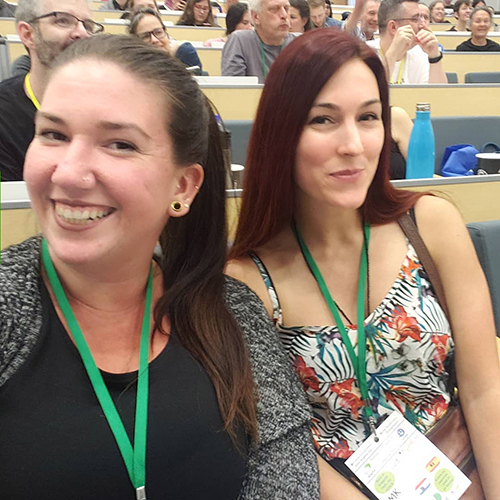
Well, a handful of years and languages later, I’m here to help you learn from my mistakes.
Because I did eventually get fluent in French–and largely through immersion!
But not the way you think I did.
Here are the biggest misconceptions I had about learning through French immersion.
- It’ll be sink-or-swim: I’ll have to learn it. What I didn’t take into account was that I’m a native English speaker… and that most of the Western world speaks English. If someone couldn’t communicate with me, they would just switch to English.
- I’ll learn great under pressure. I love a good work deadline, but with languages? If I couldn’t communicate with a grocery store bagger (and they couldn’t speak English), the sheer amount of stress of having to navigate a language that I didn’t speak was incredibly unproductive.
- I can learn French in X weeks or months. I’ll be honest with you: I fell prey to marketing schemes. I went for 8 weeks of full immersion, studying by myself on weekends because I saw it was possible online. (Spoiler: it took a bit longer.)
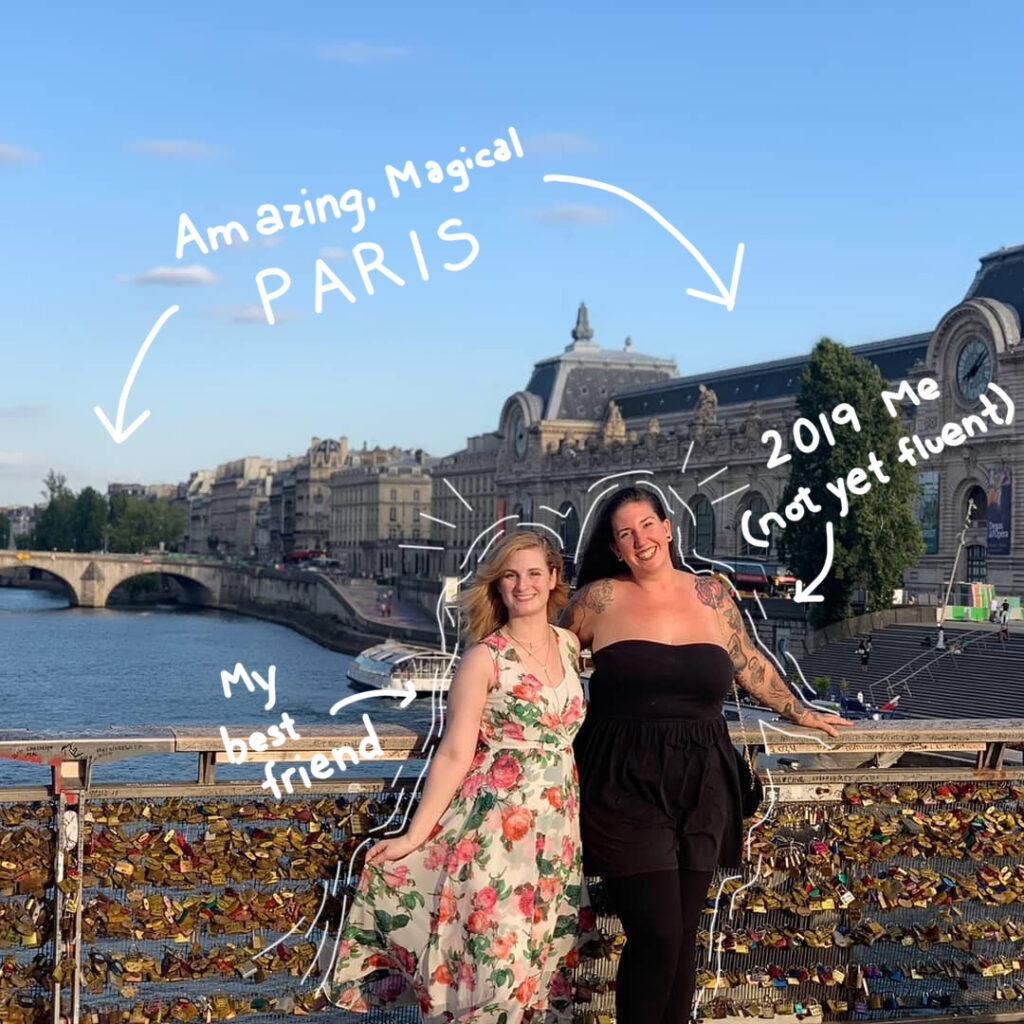
But I did eventually learn French through immersion. I proudly speak fluently, read strongly, and enjoy things like podcasts and Netflix.
So how did it eventually come together?
A lot of at-home French immersion.
In fact, if I had to do it all again, here’s how I would do it the next time around:
- Prepare for a trip abroad with at-home, online classes. Forget old textbooks and community college classes. There are a ton of amazing, interactive ways to learn French at home. I wrote an article about it recently, but I wish I had even just done an hour or two a week for a few months before going abroad!
- Enjoy at-home French immersion. Sure there’s TV and movies… but did you know there are YouTubers, musicians, and even podcasters who make amazing learning material for beginner- and intermediate students? I struggled for months to understand spoken French–not accustoming myself to how it sounds before traveling was another one of my biggest errors.
- Polish my French skills with slow-travel with some structured immersion courses. Finally, not all French immersion has to be done inside formal programs. When I went to Paris a year after starting French, I used things like museum tours, AirBNB experiences, and even Uber Pools to create myself a DIY-immersion experience without the price tag of the schools. I wish I had known earlier!
Next in this article, we’ll jump to the part you’re probably most interested in (French immersion schools and programs).
But if you’re interested in starting your own French immersion at home (like I wish I had), make sure you read through til the end.
2. French Immersion Schools & Programs
Okay: now that we’ve gotten through what I do and don’t recommend French immersion schools and programs for, let’s get to the fun stuff!
This information is all updated to the most recent publication date.
I will be confirming this information at least once a year, but if you see something that needs updating, please leave it in the comments so we can help others!
Browse by Francophone Country
🇧🇪 Belgium
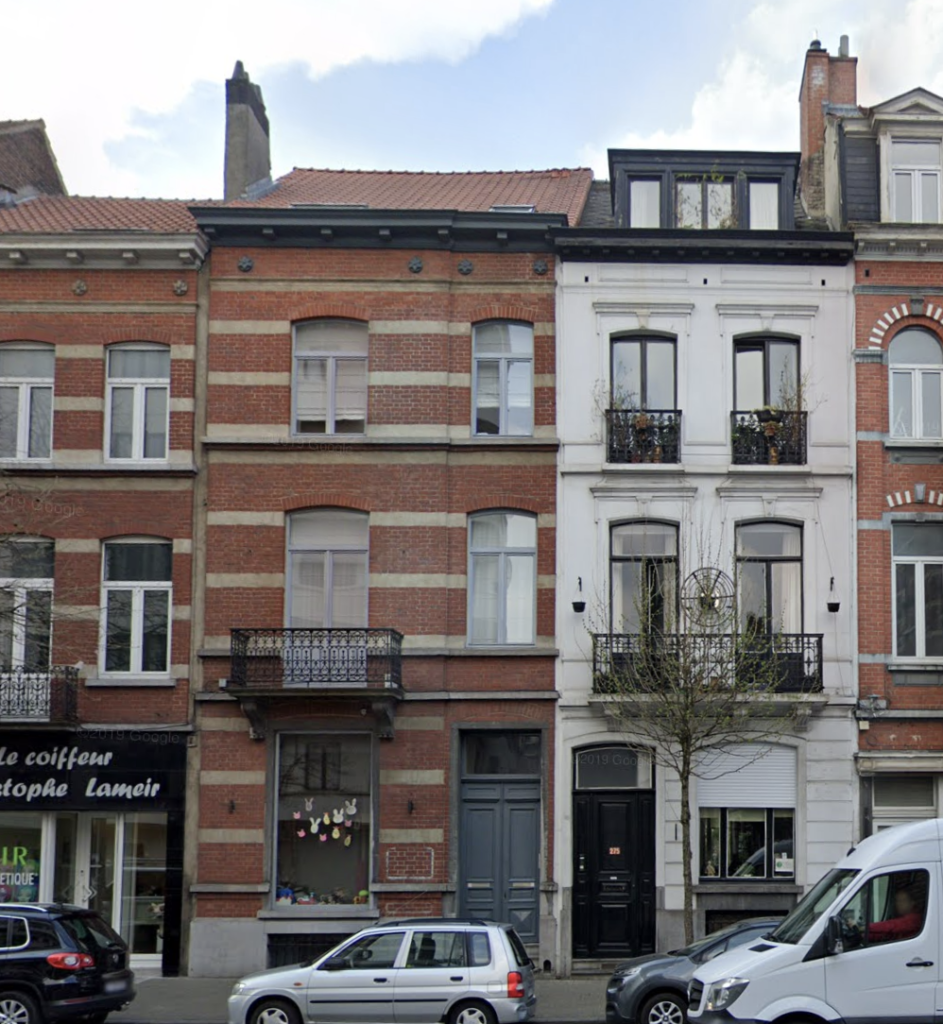
Class Structure: 1-3 nights a week x 12 weeks OR daily individual intensive
Extra Activities: None
Seasons / Schedule: Rolling admission throughout the year
Price Range: 580-870€ per 12 weeks of group classes or 544€ for 10hrs of solo classes
While there aren’t any typical French immersion tourist schools in Belgium that I’m aware of, the CEFR school may be a good choice for slow travelers.
For faster travels, students can buy packets of 10 hours of private classes around your schedule.
Have you gone to CEFR French school? We’re looking for travel writers and experienced language bloggers to help us expand this entry!
🇧🇪 We're looking for experienced travel or language content creators to expand our list of French immersion schools in Belgium! Contact us if you want to add to our list. 🇧🇪
🇨🇦 Canada
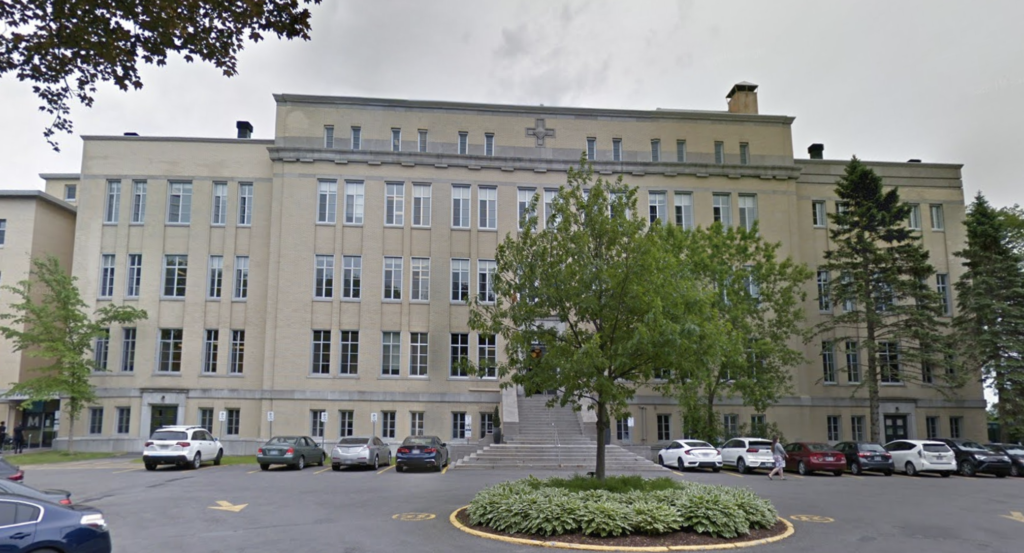
Class Structure: 2hrs grammar in the morning, 2hrs workshop after lunch, optional 1hr extra intensive at the end (a-la-carte pricing)
Extra Activities: Available at additional costs
Seasons / Schedule: Year-round, starting any Monday
Price Range: Single weeks starting at $255 CAD/week, but I strongly suggest the $430 CAD option. (À-la-carte pricing, based on how many hours you do a week.)
This is the school I, the author of this article, attended when I started learning French–so this section is by me!
Summary: I spent 8 weeks in late summer and early fall 2018 at College Merici’s Edu-Inter program. It was down the street from Laval (the next French immersion program on this list), but I chose Edu-Inter because it gave students the ability to drop in any week of the year, although Laval’s program was revied better (and, while I was in Canada, talked about more positively).
Strengths: Maybe it’s because the program is attached to a small college, but the majority of the teachers that they attracted were fantastic. Almost all of them were incredibly dynamic, creative, and patient. I also loved how I could pick how long my days were going to be and have really intensive learning days (which was more my style) but other students could leave early.
Weaknesses: Office management is bureaucratic, unorganized, and doesn’t really respond to student problems. You’re moved quickly through levels regardless of what you’re learning (or not), and there isn’t any personalization of lesson plans for individual students. Fellow students complained about homestay options, although my own was fine. Class sizes for A1 and A2 during the summer were around 20 students during the morning, which would trickle down to around 5 students in the evening intensive workshop. Once I got to B1, the classes were down to around 8 students in the morning and 4 by the evening.
Do I recommend it? Only to students who are self-motivated and will work to get the most out of any program. If you want to learn French in a part of Canada where you’ll be forced to speak it, Quebec City is a great place, and Inter-Edu is a decent option.
Laval University (Quebec City, Canada 🇨🇦)
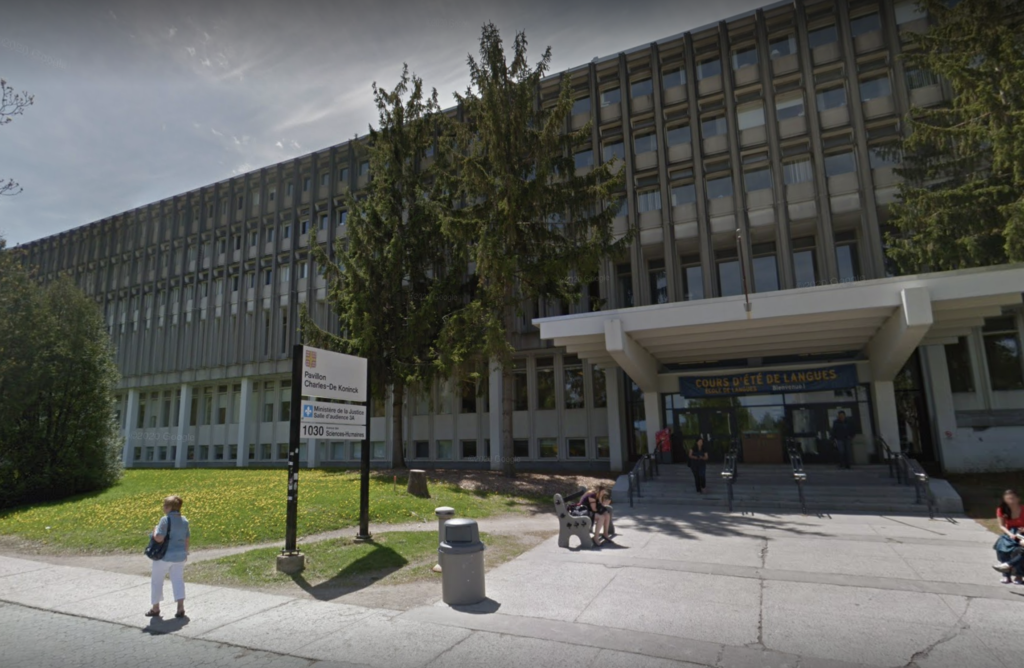
Class Structure: 5-week, full-time academic program
Extra Activities: None at present
Seasons / Schedule: 5-week fixed-date summer sessions (and during the school semester for credit)
Price Range: $945.80 CAD for Canadian citizens; $4,153.22 CAD for international students
This section was written by Megan, an Anglophone working on French and Mandarin and who’s dreaming of climbing mountains in Taiwan again.
Summary: As my classmates and I were in the A1-A2 range, it was hard to express ourselves fully, so we spoke English more than we should have. Unlike in the small town, where we were warned that if you were caught speaking English 7 times, you were kicked out of the program (we also were told that people in the town could also report you – haha), so there was more pressure to make it a true full immersion experience. On this note, at Laval, I stayed in a single dorm room and cooked my meals in the common kitchen downstairs or went out to restaurants to eat with friends. While in the small town, I lived with an elderly couple and ate breakfast with them every morning. Lunch and dinner were at another home with a large group students of all language levels.
Strengths: Overall, the experience was very good. The animateurs/animatrices were great–always super patient and helpful–and the administration was very well organized. Being located in Quebec City, downtown was a short bus ride away, so there were plenty of activities to take in – whether they were organized through the program or whether you just wanted to go out on your own (or with friends).
Like any class or program, what you get out of it depends partly on your teacher(s) and what you’re willing to put into the program. I do compare this experience to my previous Explore program, which was in a very small town (Trois-Pistoles). Since this program was located in a city on a university campus, there was a lot of freedom, but this meant I didn’t feel as much pressure to keep up speaking French.
Weaknesses: The one major weakness is that since this program is mainly filled with high school and uni students there on a scholarship, not all took the program seriously. It was like a summer camp for many of the students, so they didn’t put effort into the coursework. I think the expectation from the teacher was lowered because of this. While most of the Canadian students in the small town were also there on a scholarship, I think that the ones who picked the small town were the ones who intended to get more out of the program whereas those who picked the university campus were looking to have more fun and party.
Does Meghan recommend it? Overall, I would recommend the program if you’re looking to be in an urban area, want more freedom, and would rather not live with a family.
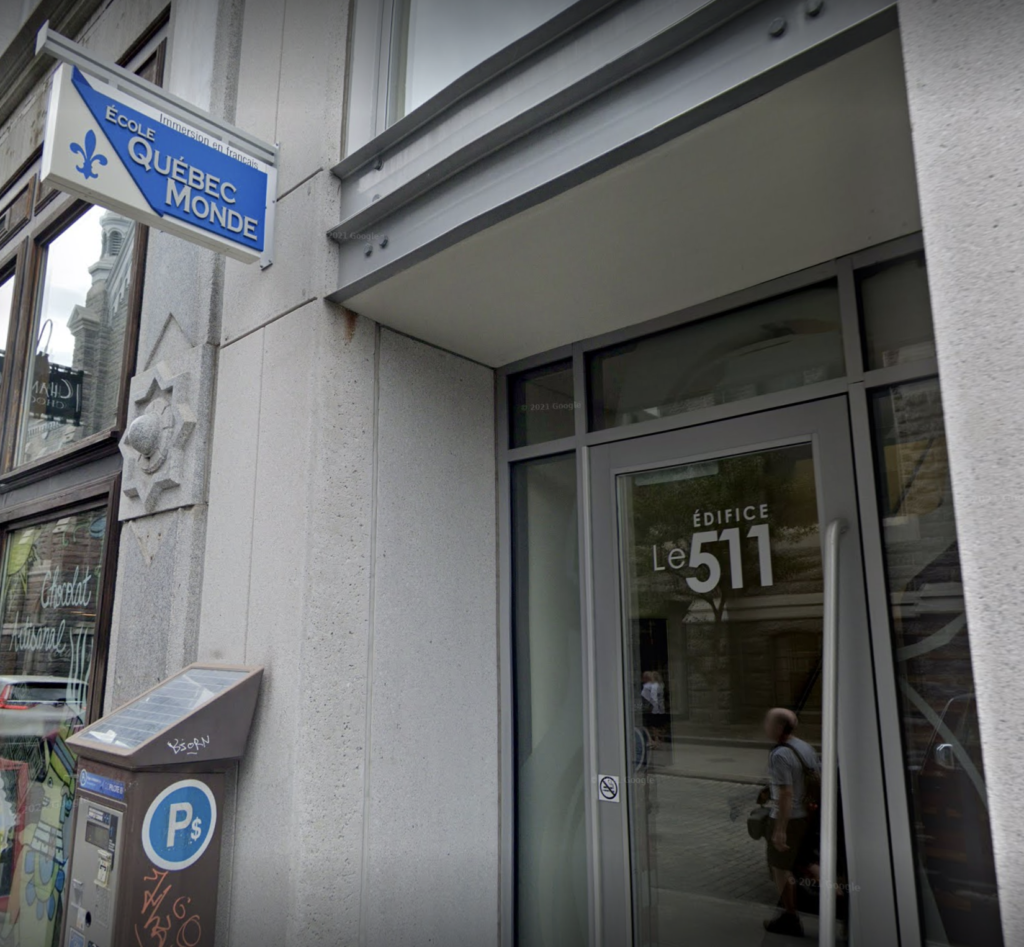
Class Structure: 20hrs per week
Extra Activities: Unclear
Seasons / Schedule: Rolling weekly registration
Price Range: Starting at $325 Canadian per week, plus additional fees sign-up and materials. Does not include food or lodging.
Summary: The smallest school in Quebec city, it’s unclear what the programs look like exactly. But the school claims to have max 8 students per class (which are significantly better the 18-20 max at the university-affiliated schools) so it’s worth giving them a call and seeing what they offer.
Have you studied through the École Québec Monde? We’re looking for travel writers and experienced language bloggers to help us expand this entry!
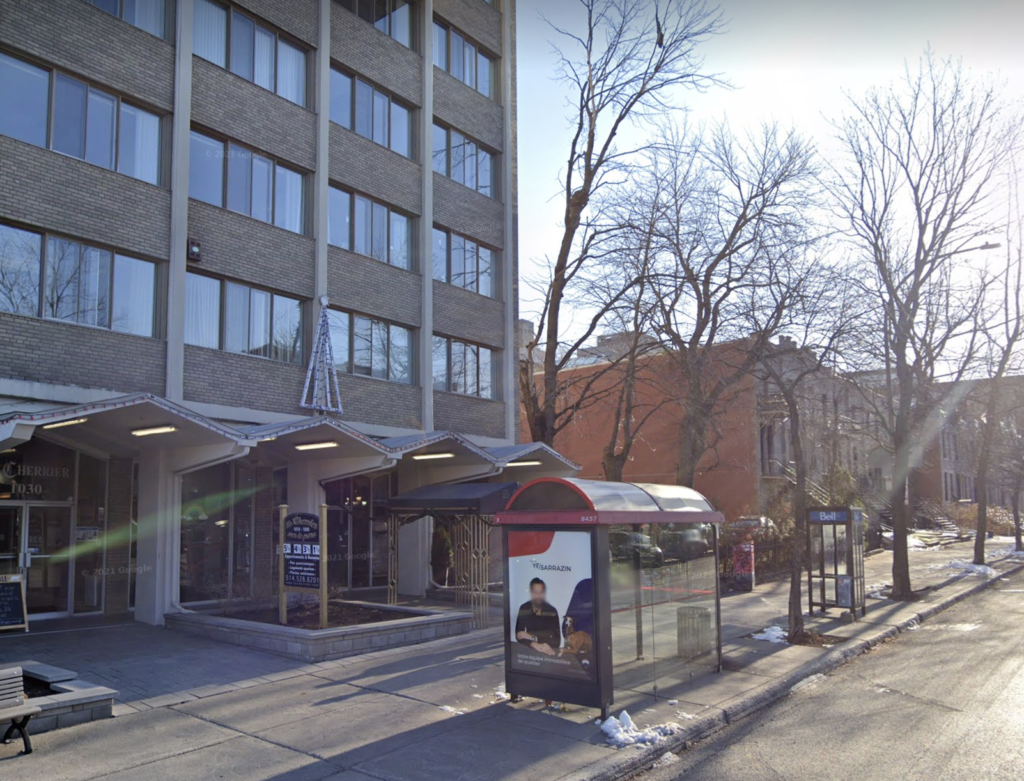
Class Structure: 1 month of 20 classes, 3hrs each, M-F
Extra Activities: None
Seasons / Schedule: New sign-ups every month
Price Range: $880 CAD
Summary: The French School is the smallest school on this list, taught exclusively by one teacher–the owner.
It also has a totally unique promise: that you will master beginner A1 French in one month. (The perfect amount of French for a tourist or someone looking for survival French.)
At this school you’ll have 20 classes, 3 hours each–all designed to bring you from zero to survival level!
Have you studied at The French School? We’re looking for travel writers and experienced language bloggers to help us expand this entry!
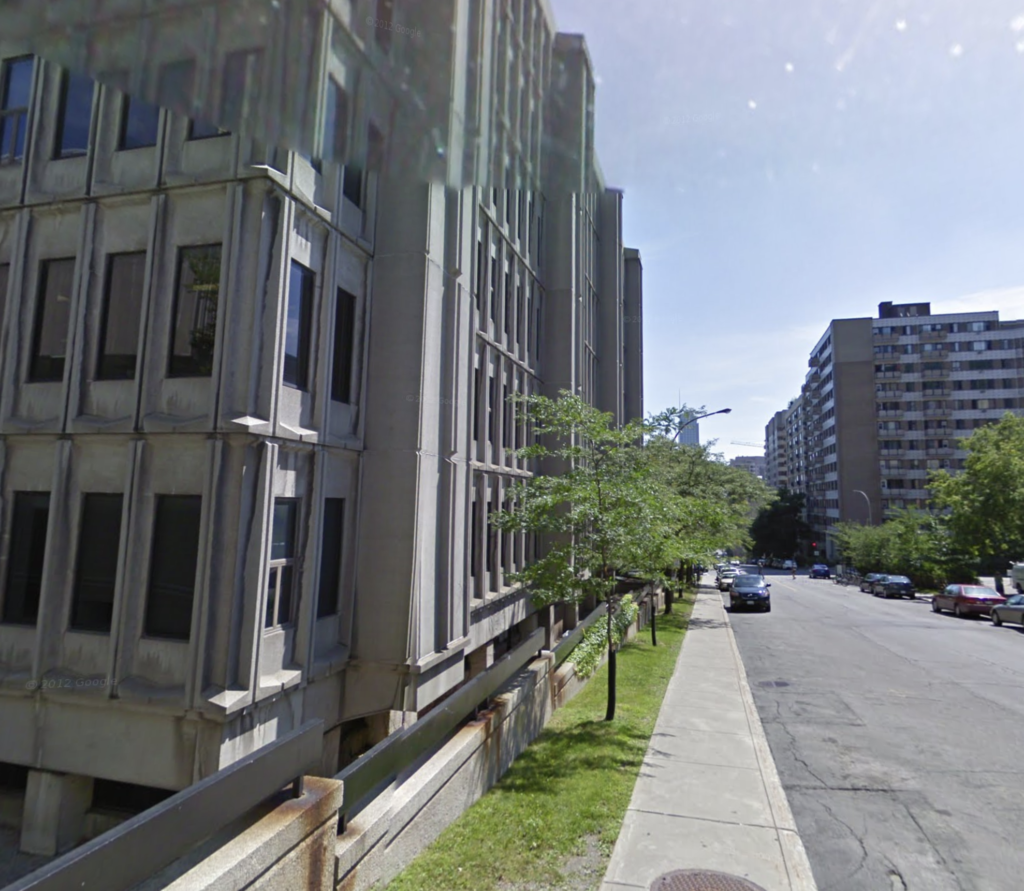
Class Structure: 8-week fixed schedule of morning classes or fall-winter university courses available
Extra Activities: “Occasional evening cultural activities” and some weekend “excursions, trips, and social activities” (not included in price).
Seasons / Schedule: Fixed schedule 8-week summer intensives with university-run fall and winter options.
Price Range: $50 deposit to register as McGill student, remainder depends on citizenship status and qualifications. Details here.
Summary: McGill is associated with the well-known university and has incredibly qualified teachers, but few activities and fun. According to a friend who studied there, however, little emphasis was placed on interactive learning and students are expected to learn grammar, read and write, and take tests at standard CEFR levels.
However, they’re the only Canadian French immersion school on this list that specifically offers C1 classes and gives you college credits, so if you’re looking to truly polish your French for your career this may be your best choice.
Have you studied at McGill? We’re looking for travel writers and experienced language bloggers to help us expand this entry!
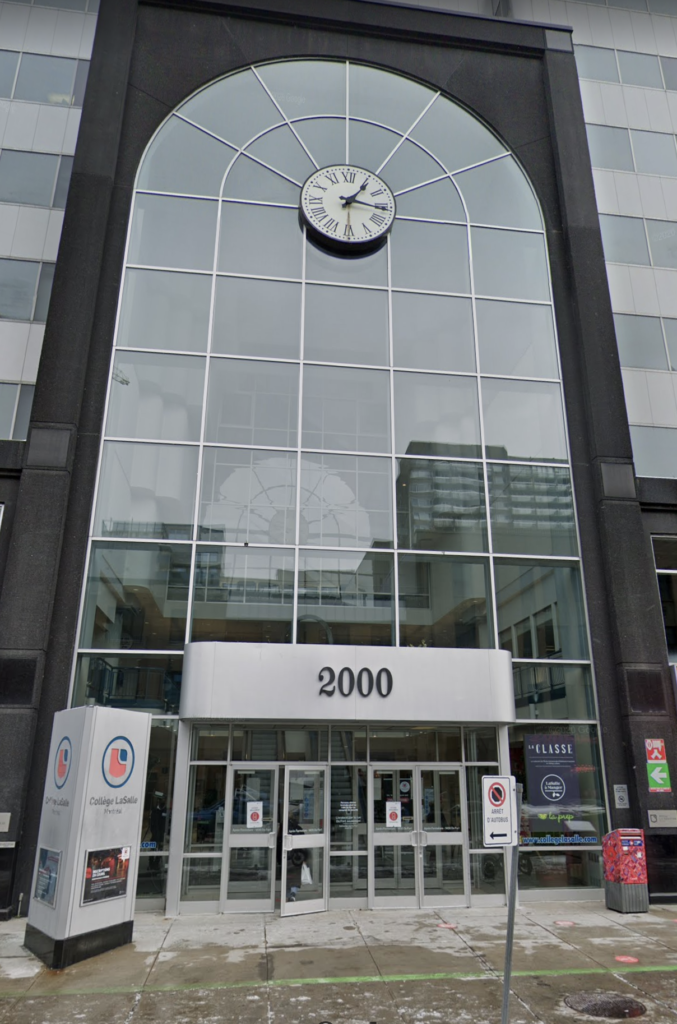
Class Structure: 15-30hrs / week, depending on package
Extra Activities: Some
Seasons / Schedule: Weekly rolling sign up (50 weeks a year)
Price Range: Starting at $315-410/week with prices decreasing the longer you stay. (Accommodations, food, and activities not included.)
Summary: Languages Across Borders has two campuses on each side of Canada and specializes in both English and French learning through immersion.
Their classes cap off at 15 students, typical for Canadian immersion schools, but little is available about after-school activities and excursions (although the site claims to have them weekly).
Have you studied at Languages Across Borders? We’re looking for travel writers and experienced language bloggers to help us expand this entry!
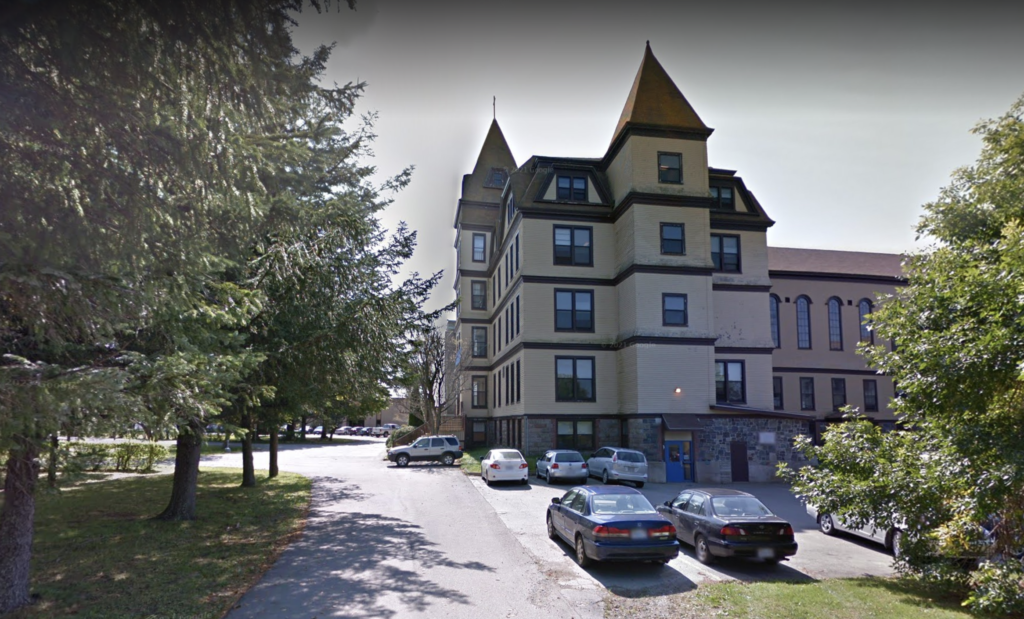
Class Structure: 2 formal morning classes, afternoon workshops, and optional additional activities
Extra Activities: Evening social activities and weekend excursions
Seasons / Schedule: 5-week spring and summer sessions (fixed dates)
Price Range: $3,827.76 CAD for Canadian citizens; $4,197.23 CAD for international students (including tuition, activities, room and board) + discounts for students over 60
Summary: Saint Anne is one of the only intensive immersion schools that specialized in Acadian French–a dialect unique to modern-day Maine, Nova Scotia, New Brunswick, and parts of Louisiana.
Unfortunately, both programs are currently canceled for 2021, although they’re expected to resume in 2022.
Have you gone to Saint Anne? We’re looking for travel writers and experienced language bloggers to help us expand this entry!
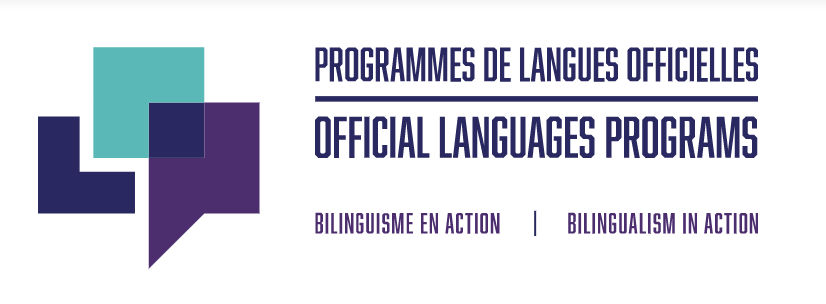
Class Structure: The Explore programs are one-month immersion experiences for young adults 18-30 which include overnight stays and full immersion. The Languages at Work are for adults in the same age range once they’ve finished Explore but is a youth summer employment program.
Extra Activities: Depends on location
Seasons / Schedule: Depends on location
Price Range: For Canadian citizens only. Funded by the federal government with some additional deposits or fees, depending on which program you choose.
Summary: The Official Languages Program was founded by the Canadian federal government in order to make French immersion schools available to young Canadians throughout the country.
Times, experiences, and date ranges vary depending on your province. Click here to see the upcoming schedule for the Explore program or click here for the follow-up program, Languages at Work..
Have you studied through the Official Languages Program? We’re looking for travel writers and experienced language bloggers to help us expand this entry!
🇨🇦 We're looking for experienced travel or language content creators to expand our list of French immersion schools in Canada! Contact us if you want to add to our list. 🇨🇦
🇫🇷 France
LSF Montpellier (Montpellier, France 🇫🇷)
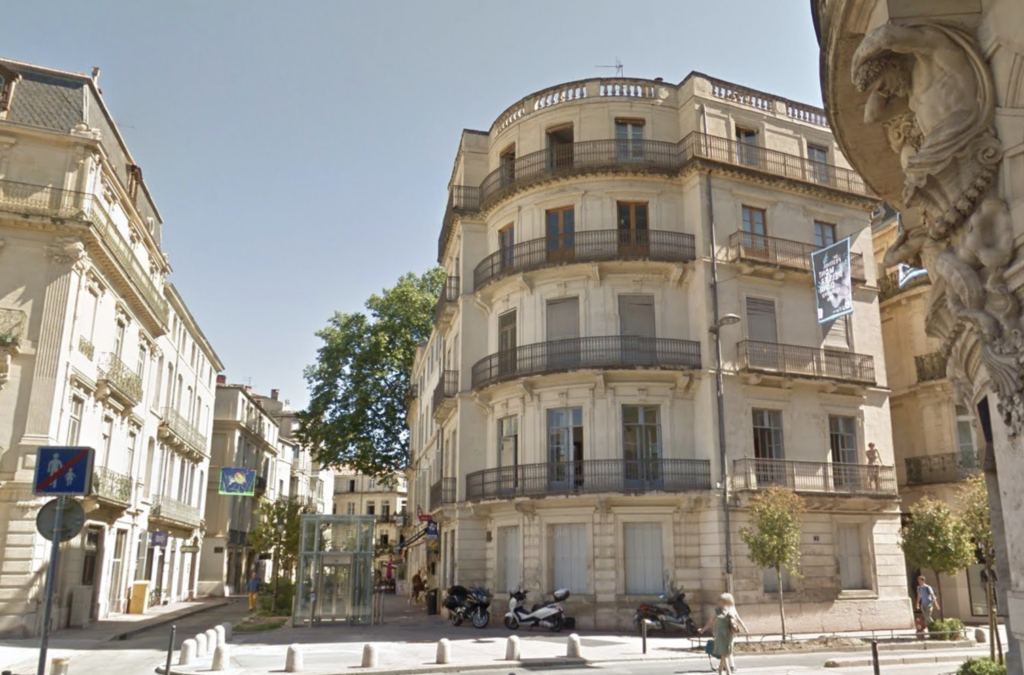
Class Structure: Starting at 20hrs/week for the basic class, but add more daily classroom hours for additional workshops, intensives, and immersion.
Extra Activities: Optional trips and creative activities after class, starting at 70€ per week.
Seasons / Schedule: Starting any Monday, year-round
Price Range: 220€-670€/week, depending on how many hours a day you spend in immersion. (Classes only: room, board, food, and other activities separate.)
This section was written by my good friend Robin, a Ph.D. student at the University of Canterbury who speaks and studies French and Mandarin in her free time.
Summary: There were some things I would have changed (see weaknesses of the program section), but overall it was an absolutely incredible experience! I loved how lessons felt like playtime with the language. Of course, we learnt grammar, vocabulary, had homework and quizzes, but the activities we did in class to put learning to use were really fun, effective, and made the language our own. I also did two of their extracurricular activities – a field trip to Carcassonne and a watercolour atelier at a local art school. Both were incredibly enriching and I made memories that I’ll never forget. If you can only spend a week or two there I’m sure you will still learn a lot, but I found 3 weeks to be a good minimum amount of time in order to get used to the flow of classes, feel at home in a new country, and make the most of the immersion environment.
Strengths: You start off by doing an online placement test, then once you arrive there’s a short informal introductory interview to get an idea of your speaking abilities. I ended up testing into their B2.1 level for my daily classes and C1 for the intensive classes. I was terrified (especially after my first C1 class), but I spoke with the teacher about my concerns and she said even though she could tell that I was shy and speaking was my weakness, she could also tell that I understood what was going on and wanted me to stay at that level to push me to improve and to leave my comfort zone. I really appreciated that, because as someone who is quite shy I can often be disregarded in these kinds of group language learning situations.
This teacher, as well as the other teachers I had, were really skilled at adapting their teaching styles and ability to encourage and push individual students depending on their level/goals in a way that improved the class as a whole. I also found that the school in general was skilled at placing students in the appropriate level while providing accomodations/changes as necessary. Overall this helped maintain a positive learning environment in class.
Class sizes were around 10 people, which created an environment that fostered lively participation in group activities without any one person becoming overbearing in class. I also appreciated the pedagogical approach of the school. There was a good balance between grammar lectures, group discussions, listening exercises, quizzes, analysing films, writing homework, and games. All of this helped the language come alive in a fun and interactive way.
Weaknesses: While the teachers only spoke French to the students and French was the only language used in the classrooms (at least from an intermediate/advanced perspective), I would have loved it if speaking French were required between students during breaks. Or, if it weren’t a requirement, to put some sort of language pledge in place so students who wanted to challenge themselves to a full immersion experience wouldn’t feel pressured to switch to English during break time.
Homestays can be quite variable. While I loved my host family, I didn’t have many opportunities to spend much time with them as they were quite separated from myself and the other student who lived there. I did have one or two good chats with the host mum and the family was lovely, but it wasn’t the homestay experience I would have liked and it was definitely lacking compared to some of my other classmates. Next time I would try to stay with a different host family or stay in student accomodation.
Does Robin recommend it? It depends on your needs and goals. The classes were packed with information, participation was strongly encouraged, there was some homework every night, and there were quizzes every Friday. However, these things are put in place to help you and the teacher see what you’re retaining and what you need to work on. It’s not meant to be high pressure, but there is an expectation that you will put in the work to make progress.
If you’re looking to coast by or hoping to absorb information by passively being there, this isn’t the program for you. If you’re willing to dive into French, put in the work, and have a positive mindset, be ready to have your French improve like you never could have imagined.
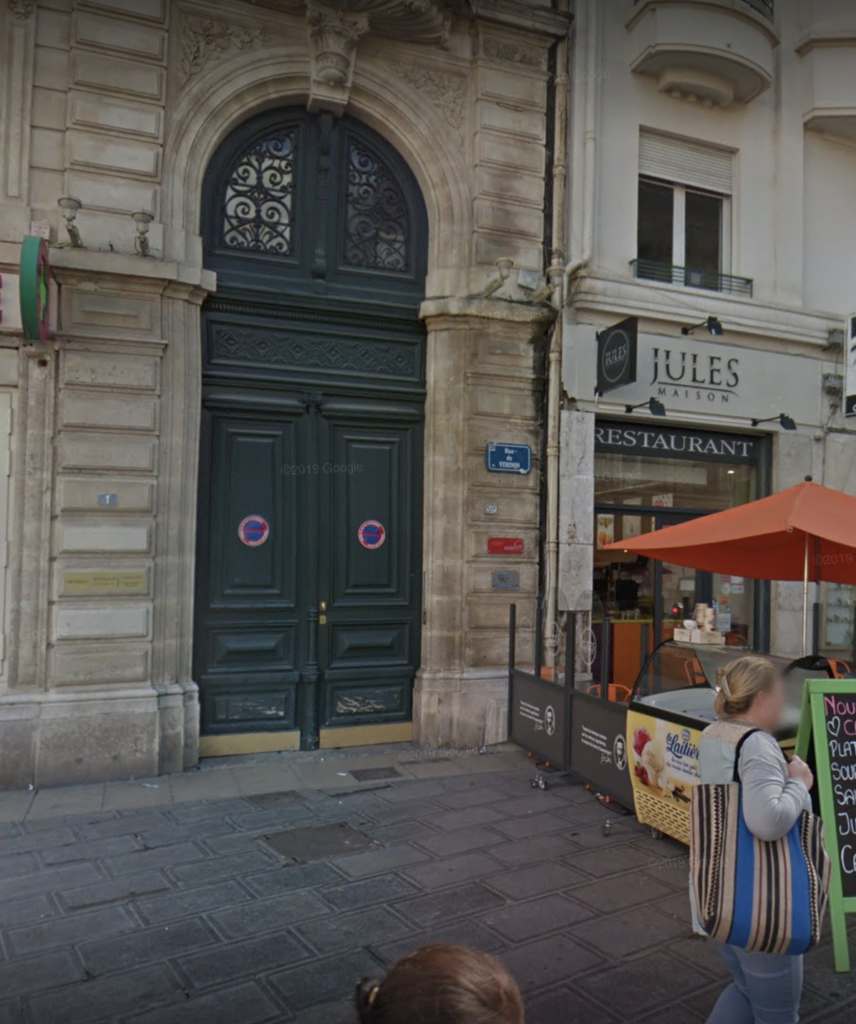
Class Structure: Standard classes are 15+ weekly hours with formal classes and speaking workshops | Activity classes are 20hrs/week focused on cooking, yoga, or something else
Extra Activities: Depends on which course
Seasons / Schedule: Ongoing rolling admission week-by-week
Price Range: 230 – 680 / week depending on hours and duration
Accent Français is a budget French school for students who don’t mind a bigger class, but it’s most notable on this list because of it’s activity-based immersion classes. Yoga, cooking, internships, volunteer work… if you want to do something besides grammar, it has a number of awesome options.
Have you gone to Accent Français? We’re looking for travel writers and experienced language bloggers to help us expand this entry!
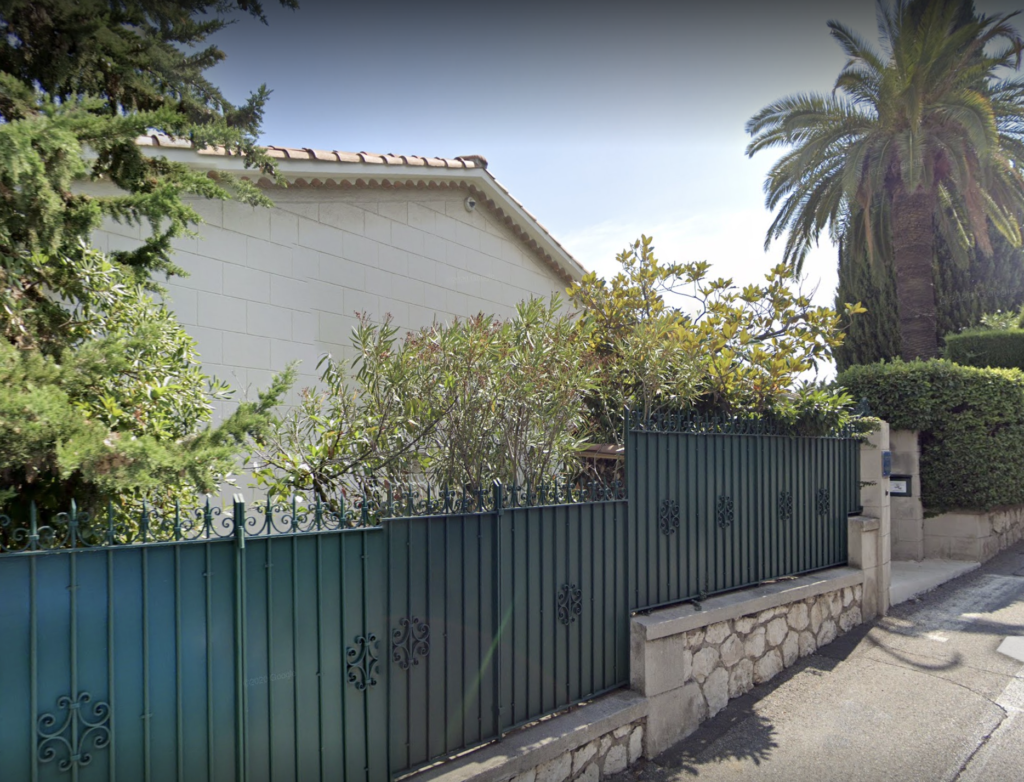
Class Structure: All-in-one program, including meals, from 8:30am-5pm Monday-Friday. Includes 3 classes and several breakout activities throughout the day.
Extra Activities: Excursions available
Seasons / Schedule: Weekly sessions year-round.
Price Range: 420 € – 2750 € / week depending on time of year and housing.
Institute de Français is a full-immersion on-campus program for language learners who are looking to get to know other students and challenge themselves right on the French Riviera. Although the program is less flexible than most French immersion programs, it’s week-per-week approach and built-in accommodations might be a good fit for backpackers looking to travel through the area short term.
Have you gone to Institute de Français? We’re looking for travel writers and experienced language bloggers to help us expand this entry!
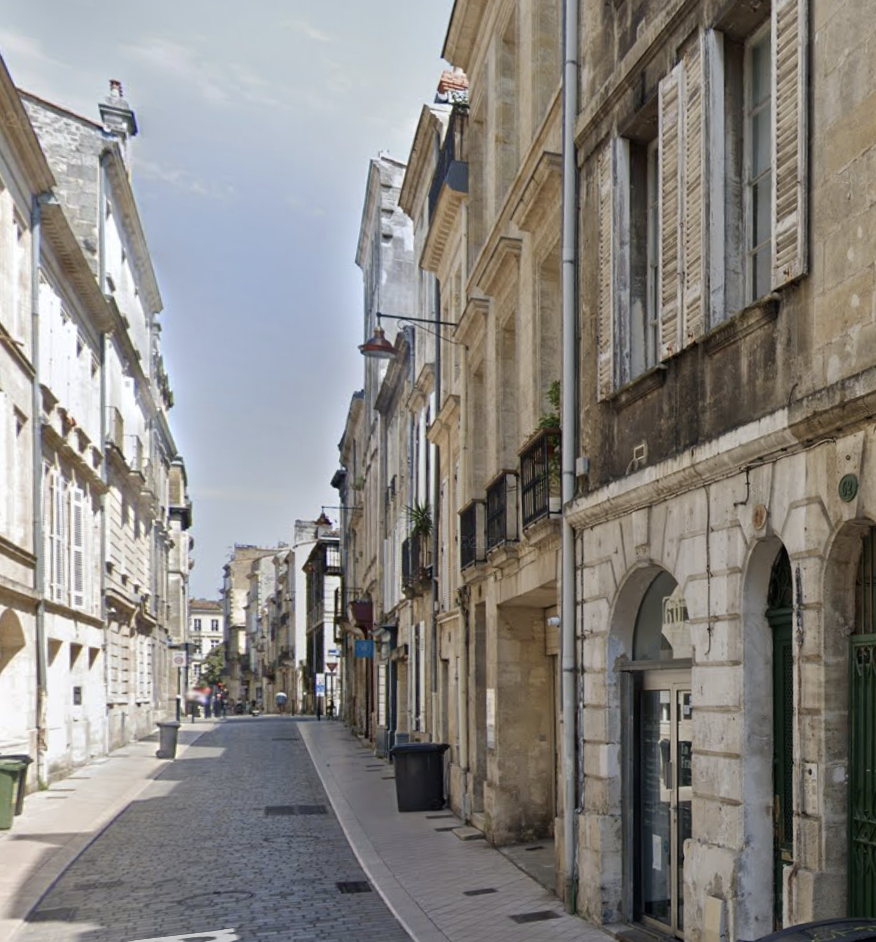
Class Structure: 20hrs group classes + individual instruction time + group excersions
Extra Activities: Included in summer intensive
Seasons / Schedule: Intensive summer classes are during fixed dates for 3-4 weeks (with 1-2hr weekly programs for available locals). Contact the school for information about the next intensive.
Price Range: 720 – 2390 €, depending on package
Summary: ComEnFrance is the smallest school on this list, but smaller doesn’t mean less valuable. Their courses are a bargain given that they include excursions and classes are 6-8 students each (whereas most other immersion schools suggest classes will be 12-18 students).
I’ve had amazing luck with tiny, adventure-focused schools like these while studying Spanish, so I suggest you make sure to add independent schools to your list of options to compare.
Have you gone to ComEnFrance? We’re looking for travel writers and experienced language bloggers to help us expand this entry!
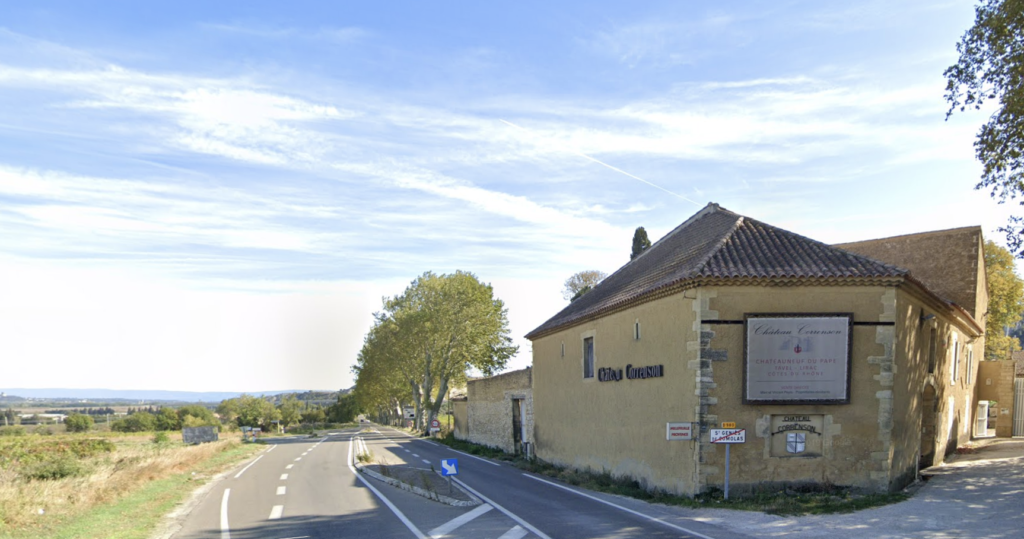
Class Structure: Each week offers students 15-20hrs mini-group classes, 10-15hrs of workshops, 3 immersion activities, and optional private classes.
Extra Activities: Included in class, but not off-campus excursions
Seasons / Schedule: Contact school
Price Range: 1645-3605 € / week
Summary: Want to study French through private classes in the countryside but still make friends? This might be your school. With mini-courses of only 2-4 students and plenty of one-on-one help, you’ll be surrounded by French in the tourist-free countryside. Unfortunately, it’s also one of the most expensive classes on our list, but the price tag reflects how personalized your classes will be.
Have you gone to Millefeuile Provence? We’re looking for travel writers and experienced language bloggers to help us expand this entry!
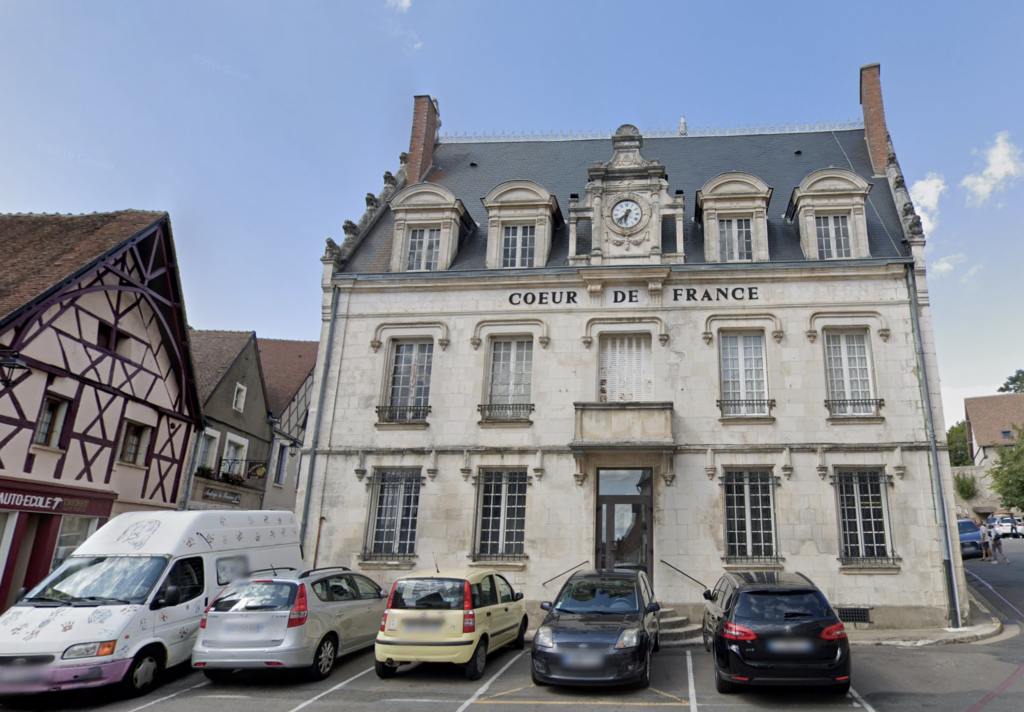
Class Structure: unclear
Extra Activities: Weekly 2-3hr excursions, around 30€ each (not included in tuition)
Seasons / Schedule: 2-week commitment, unclear about schedule
Price Range: 2245 – 3935€ per 2 weeks, including food and board
Summary: Escape from Paris! Located in a tiny village in the middle of France, this school sits in an XVIth century castle and has more information about excursions and activities than most schools on this list. With classes maxing out at 8 students, it’s the perfect wine country get away if you want to leave city life behind
It’s also one of the only schools with special accommodations for couples and families looking for a group trip.
Have you gone to Coeur de France? We’re looking for travel writers and experienced language bloggers to help us expand this entry!
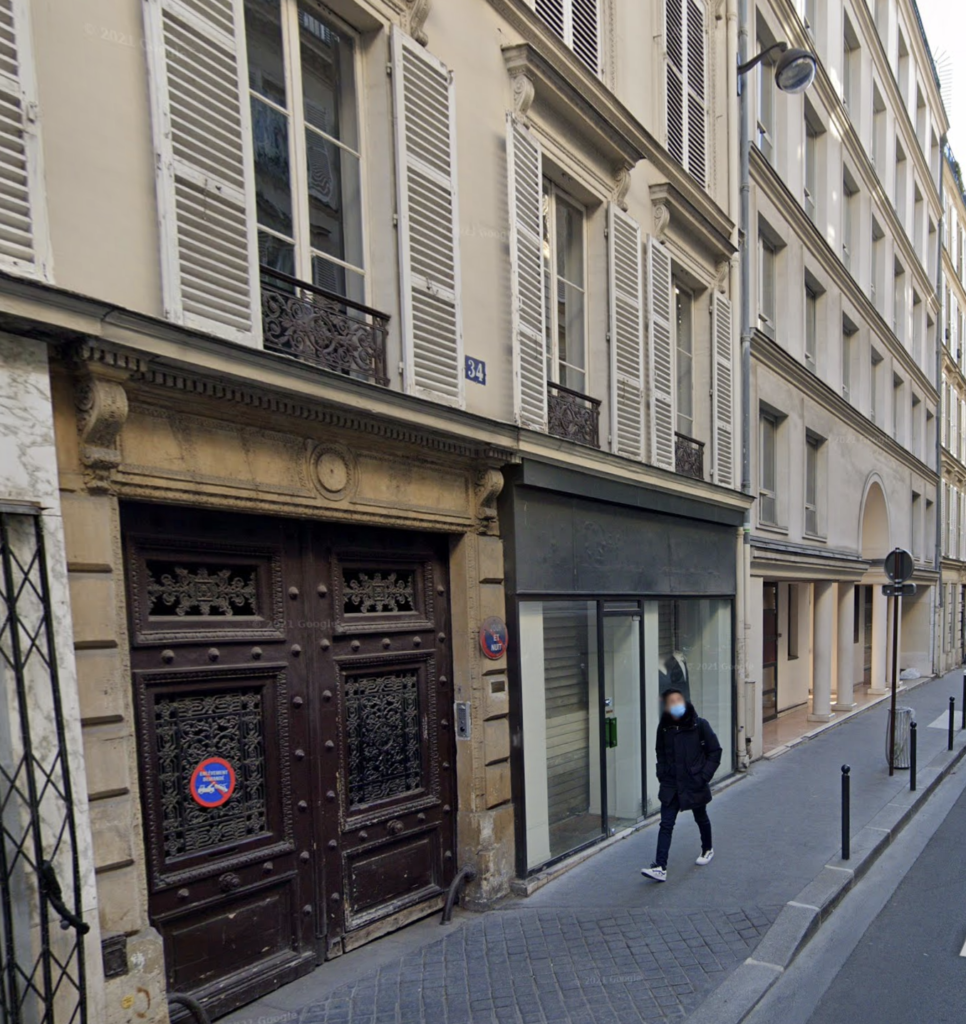
Class Structure: 12-21 hours a week of “workshop” classes plus homework (depending on package)
Extra Activities: None advertised
Seasons / Schedule: Rolling admissions throughout the year
Price Range: Starting at 320€ per week for the intensive immersion
Summary: L’atelier 9 is one of Paris’s few privately owned French immersion schools, unaffiliated with any chains, franchises, or universities.
Unlike programs in other parts of the country, it has little emphasis on activities or immersion, rather spending all of its time in hands-on classes, but it might make a good option for students who prefer to travel solo and are looking for an experience while stopping by in Paris.
Have you gone to L’atelier 9? We’re looking for travel writers and experienced language bloggers to help us expand this entry!
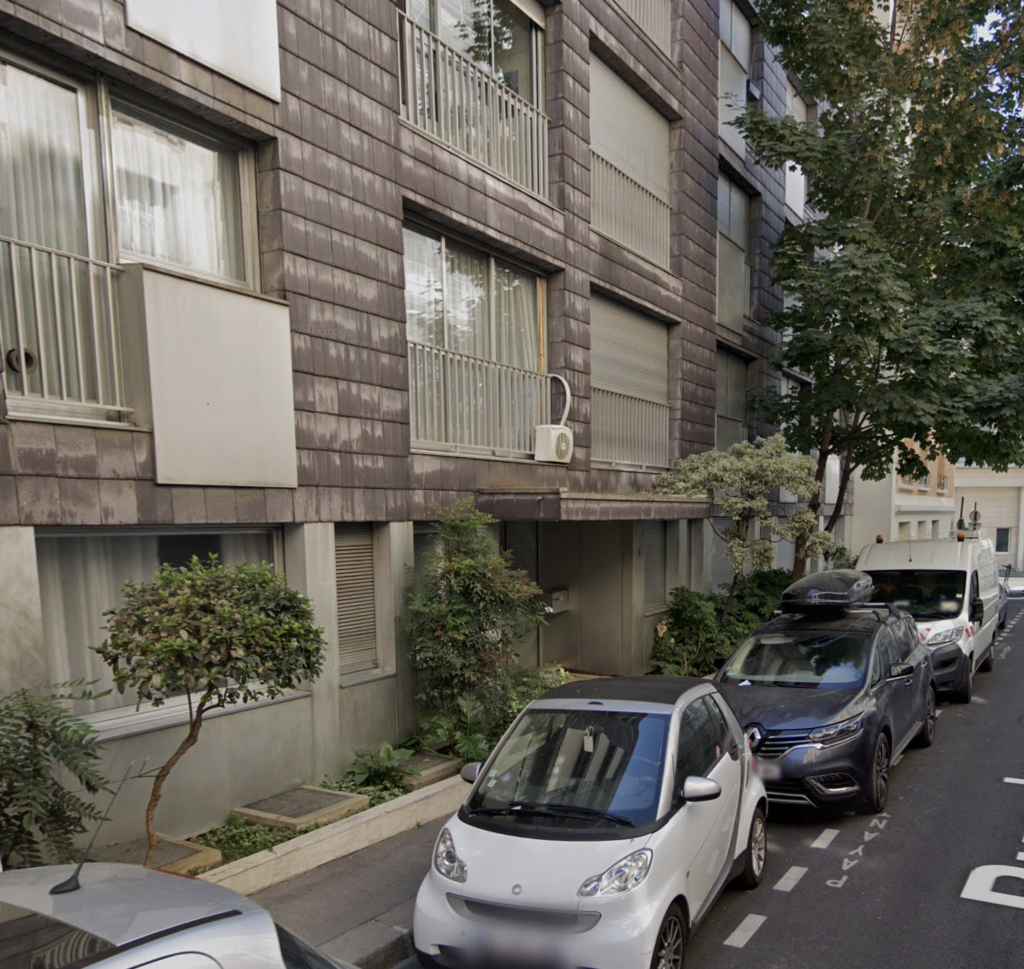
Class Structure: 20-32 hours in-class learning per week for adult intensives
Extra Activities: None advertised
Seasons / Schedule: Enroll any week throughout the year for as many weeks as you want
Price Range: Intensive immersion starts at 330€ per week
Summary: ACCORD is the largest French immersion school in Paris with more options than we could fit on here. Not only do they have the types of flexible immersion programs tourists crave (you can start any week at any level) but offer a handful of business and legal French options.
They also have C1 and C2 programs, which are extremely rare for immersion schools at any level.
ACCORD also has DELF preparation classes (as well as reading and writing programs) if you need to certify your French for school, work, or immigration.
Have you gone to ACCORD? We’re looking for travel writers and experienced language bloggers to help us expand this entry!
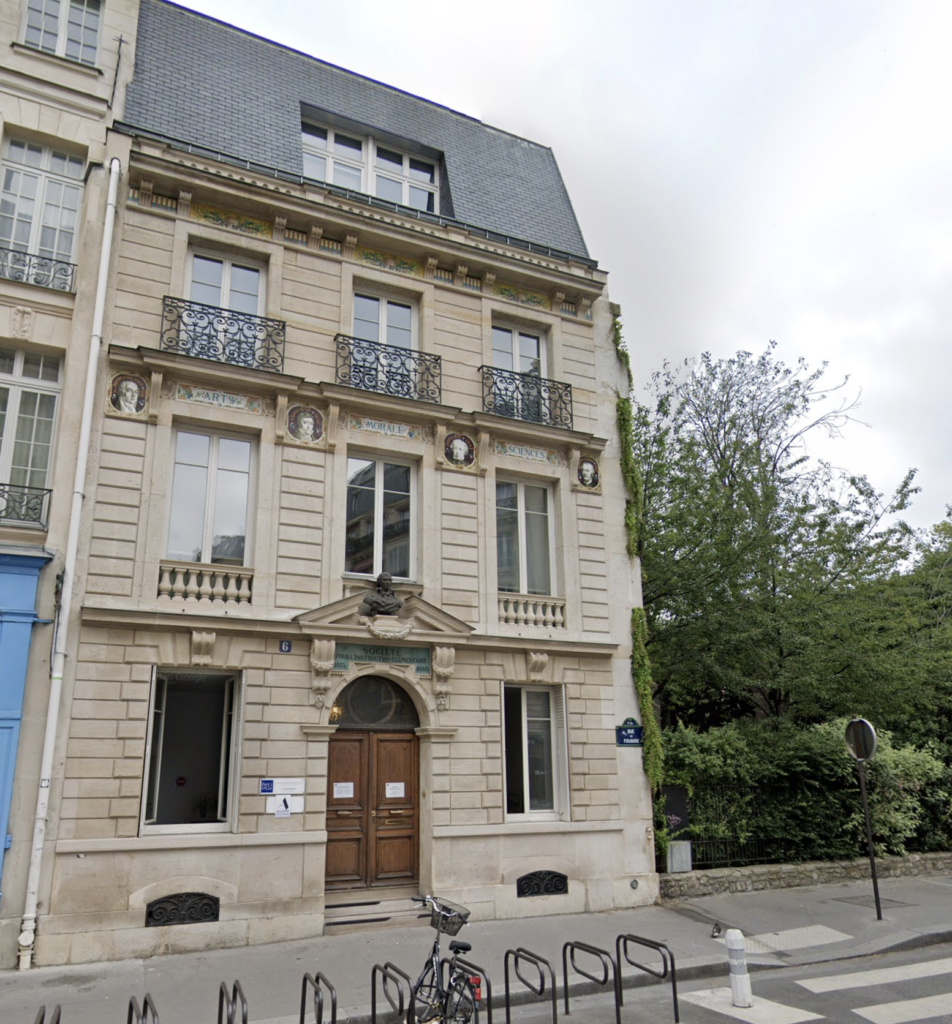
Class Structure: varies greatly based on course, but general immersion is 20-30 hours/week in the morning, mix of classes and workshops
Extra Activities: Tons, but depends on the course
Seasons / Schedule: depends on course, but general immersion available weekly throughout the year
Price Range: General immersion is 245-370 € / per week, depending on location and number of weeks. Adventure courses vary.
Summary: I normally don’t review chain schools, but French Langue has some of the most creative classes out of all the French immersion schools on this list.
They have the normal immersion experiences (details listed above) and exam prep courses–but you can also learn French through wine in Bordeaux, cooking in Nice, fashion in Paris, scuba diving in Martinique, or surfing in Biarritz.
Have you gone to France Langue? We’re looking for travel writers and experienced language bloggers to help us expand this entry!
🇫🇷 We're looking for experienced travel or language content creators to expand our list of French immersion schools in France! Contact us if you want to add to our list. 🇫🇷
🇨🇭 Switzerland
Alpadia Language School (Montreaux, Switzerland🇨🇭)
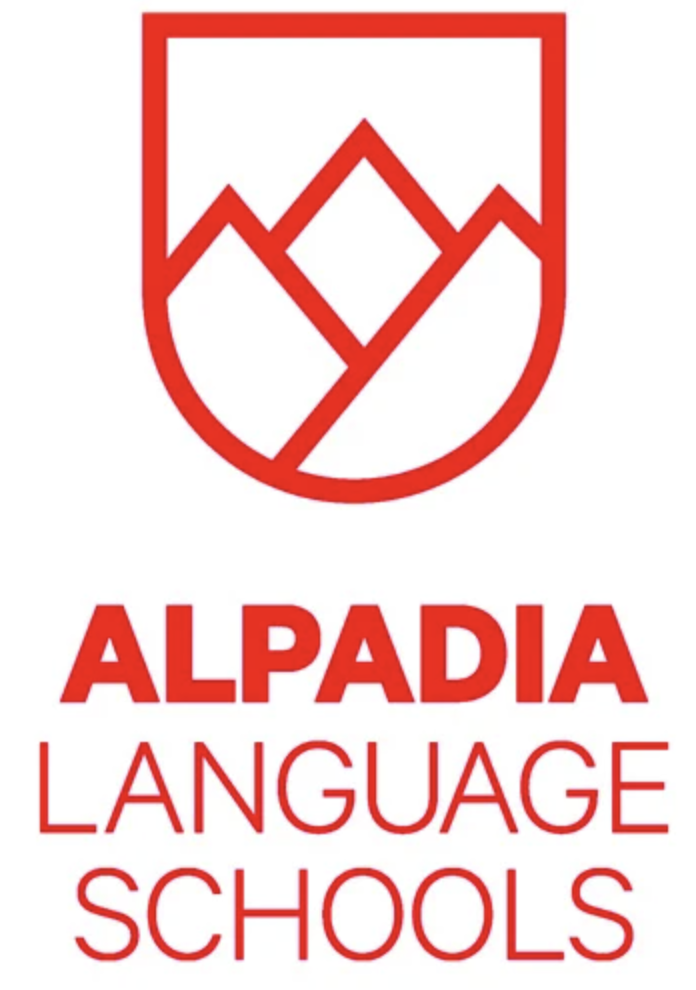
Class Structure: 20-30hrs / week, morning classes with optional workshops/speaking practice in afternoons (depending on course)
Extra Activities: None listed, although internship opportunities available for learners working on business French
Seasons / Schedule: Rolling week-by-week schedule throughout the year
Price Range: (Courses + host family) 565.00 CHF per week or 3240.00 CHF for 4 weeks.
Summary: Although I try not to include chain schools on my lists, there are few options in Switzerland and Alpadia has a number of flexible options for various levels.
You can see all of their brochures without giving them your phone number here.
Have you gone to any of the Alpadia Language Schools? We’re looking for travel writers and experienced language bloggers to help us expand this entry!
🇨🇭 We're looking for experienced travel or language content creators to expand our list of French immersion schools in Switzerland! Contact us if you want to add to our list. 🇨🇭
🇺🇸 The United States
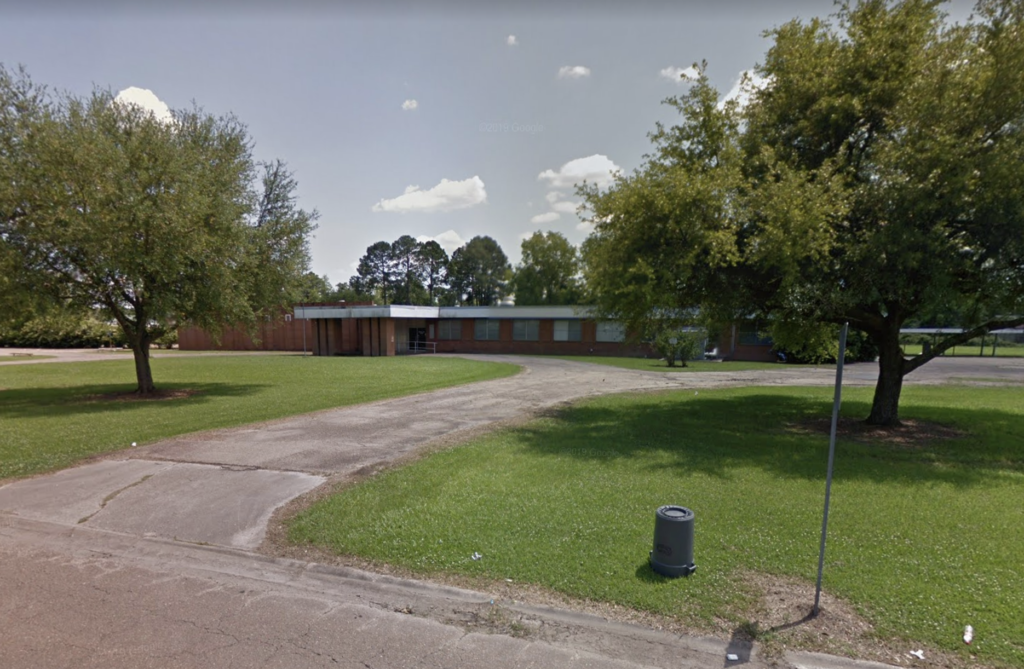
Class Structure: *
Extra Activities: *
Seasons / Schedule: *
Price Range: *
Summary: Saint Luc is Louisiana’s only adult immersion program, created especially for heritage language speakers of the unique French variations spoken in Louisiana.
*Unfortunately, they are currently closed due to the pandemic and have tentative plans to open after refurbishing the building in late 2021.
Have you gone to Saint Luc? We’re looking for travel writers and experienced bloggers to help us expand this entry!
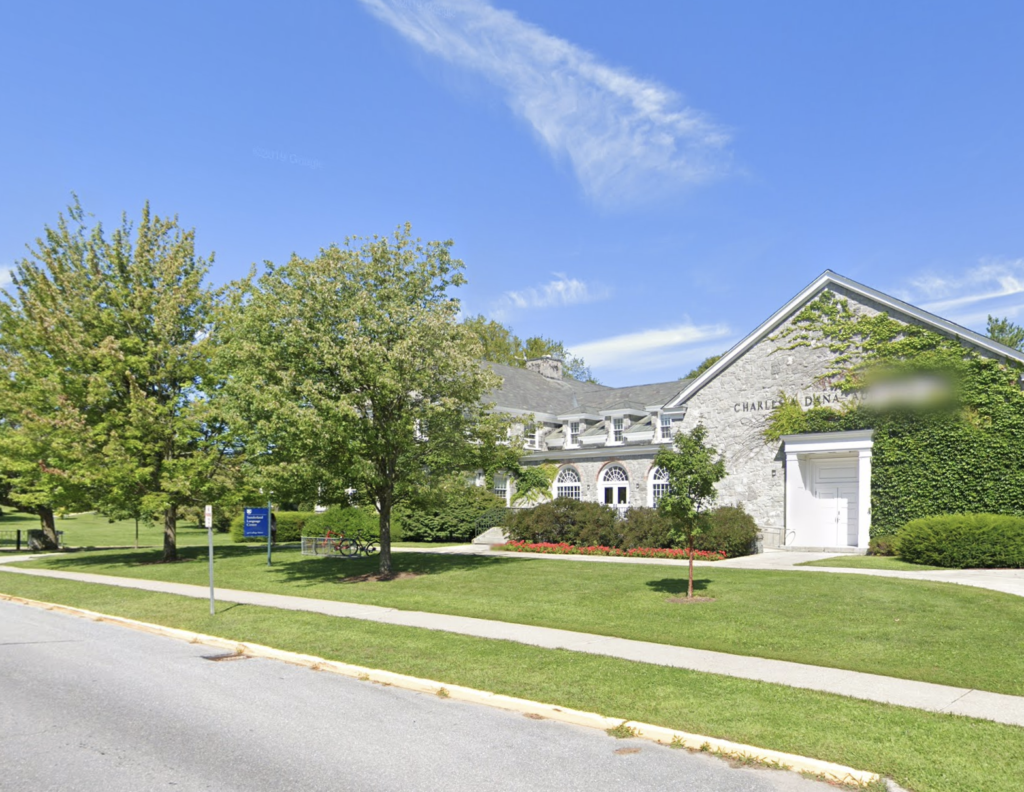
Class Structure: 2-4hrs weekday explicit instruction in a 24/7 immersion environment
Extra Activities: Daily (included in price)
Seasons / Schedule: 7-week summer immerion program
Price Range: $10,605 (tuition, room, board, all activities)
Summary: The Language Schools at Middlebury College are a relatively well-known language immersion program, but the institute was brought to the public eye in a new way after an Atlantic article by Ta-Nehisi Coates detailing the author’s time there.
Have you gone to Middlebury? We’re looking for travel writers and experienced bloggers to help us expand this entry!
Concordia Language Camps (Bemidji, Minnesota, USA 🇺🇸)
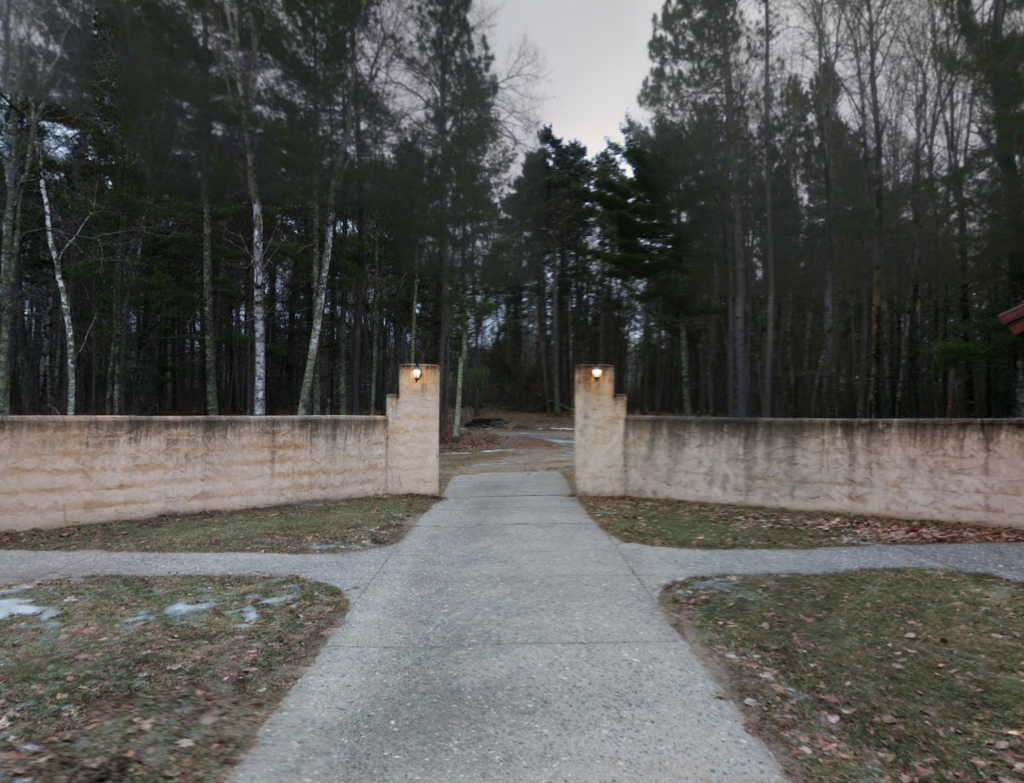
Class Structure: Short morning classes and additional immersion activities all day
Extra Activities: Yes, focus of program
Seasons / Schedule: Set summer intensives or year-round stand-alone weeks (schedules pending)
Price Range: Around $1,000 a week (including all activities, food, and board).
The following review comes from polyglot and professor Alexander Arguelles who spoke extensively about his 2019 experience in the program at Polyglot Conference. Alex has since taken over as director of the program, and the post-covid experience may look different.
Summary: In the Minnesota woods, tiny villages have been built as replicas of towns across the world. Students spend a summer living in these towns and living through immersion, as well as taking morning classes, for a foreign experience right in the US.
Strengths: Concordia has more resources than any other French immersion program in the US and has created incredibly creative experiences for students through hands-on, emotionally-centered learning.
Weaknesses: Speaking French isn’t required of students and there is very little formal grammar learning.
Does Alex recommend it? Alex had a handful of critiques but has taken over as director and theoretically tackled them himself. However, when you look at the price tag, flying out to a francophone country might end up a cheaper (and more immersive) adventure.
Have you gone to Concordia Language Villiages? We’re looking for travel writers and experienced language bloggers to help us expand this entry!
🇺🇸 We're looking for experienced travel or language content creators to expand our list of French immersion schools in Switzerland! Contact us if you want to add to our list. 🇺🇸
3. At-Home French Immersion
Like I said in the introduction, my biggest regret about learning French in immersion abroad is that I wish I had prepared by first doing French immersion at home.
In this section, I’ll give you a few highlights of how I use various at-home immersion materials and link you to other articles which you can bookmark and review.
How to organize your at-home French immersion
First, we need a plan for your at-home immersion.
Because if we fail to plan, we’re planning to fail!
And because I believe in at-home immersion so seriously (it’s how I learned French) I built a free course so you can learn how I did.
Click here to access the course.
It’s a Teachable.com course, so you’ll have 4 modules and a free printable tracker.
Just move through each one at your own pace (or scramble it up and customize!) while combining the tracker and exercises with the next part of this article.
It can be done with any language and on any schedule.
And now that you have an idea of how you can organize your at-home immersion, let’s help you find your new favorite immersion resources!
My favorite tools for DIY French Immersion
Not only is learning French through yoga a great way to learn things like body parts and verbs, but it’s perfect listening practice for beginners. (They speak so slowly!)
Plus: it’s a 2-for-1 so you can get your daily exercise in!
Now I won’t lie: French music isn’t the #1 most productive way to learn a language.
But if you’re like me and are actually learning the language in order to understand the music, I have piles upon piles of music recommendations for you!
French YouTube is my all-time favorite language learning tool. You can use it to learn French in immersion with grammar instruction, cooking recipes, craft tutorials, or anything else.
Reading is by far the most challenging French immersion tool you have at home, but I listed all of my favorite French books for learners by level so you can find the perfect one for you!
Lastly, French podcasts are a hands-free way to keep yourself swimming in the language while running around your busy life!
Finally, I don’t believe watching movies or series in French is the best way to learn French because actors speak faster than we do in daily life (they don’t have to think when they speak) and the writing is normally full of more slang than regular speech.
However, if you really want to get into French films or series, my friend Ingrid has a great article full of her suggestions.
In the comments, feel free to ask me anything about French immersion!
While I myself have only a limited experience with the schools on this list, I firmly believe that at-home French immersion is the best way to not only learn the language but connect with it as a real speaker, no matter what your current level.
What about you?
